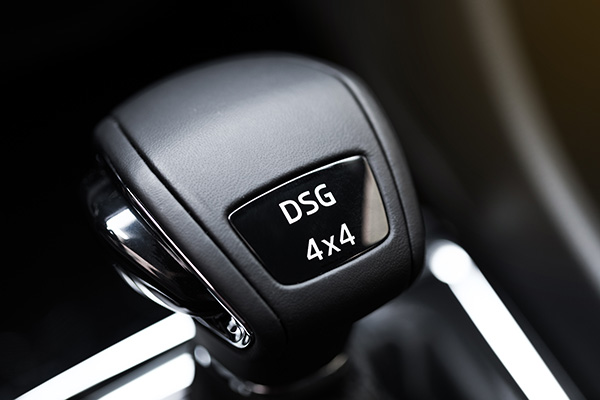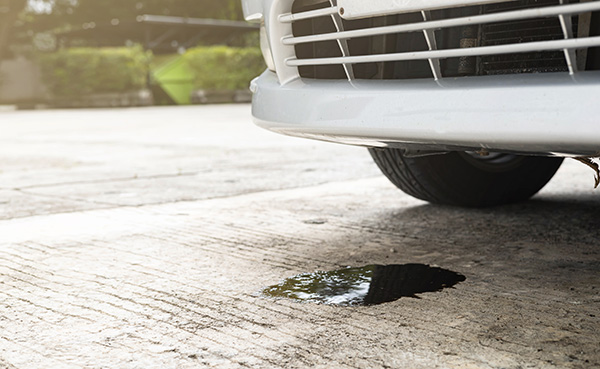Posted on 12/23/2025

A lot of Audi and VW drivers notice right away that their cars shift differently than a typical automatic. The DSG transmission feels quick, smooth, and almost predictive when you get on the throttle. That is not an accident, it is a design that blends the feel of a manual with the convenience of an automatic. Understanding what the DSG is doing behind the scenes helps explain why it can feel so strong and responsive on the road. How the DSG Transmission Works in Audi and VW A DSG is a dual clutch transmission, which means it uses two separate clutches and two sets of gears inside one housing. One clutch handles the odd gears, the other handles the even gears, and the computer can preselect the next gear before it is actually needed. When it is time to shift, the transmission simply hands power off from one clutch to the other. That design lets the DSG change gears very quickly while keeping power flowing to the wheels instead of pausing between shifts. Qu ... read more
Posted on 12/12/2025

Holiday road trips come with loaded trunks, full passenger seats, and long stretches of highway that push your car harder than normal commutes. The last thing you want is a breakdown on the way to see family or sitting on the shoulder with kids in the back. A little extra prep before you leave can make the drive quieter, safer, and much less stressful. Why Holiday Road Trips Stress Your Car More Christmas travel usually means more weight in the vehicle, longer drives at higher speeds, and colder temperatures. All of that adds up to extra work for your engine, cooling system, tires, and brakes. Small issues that barely show up around town, like a weak battery or borderline tires, have a way of turning into real problems once you are a few hours down the road. Thinking about how the car will be used on the trip helps you focus on the systems that matter most for reliability and comfort. Fluids, Filters, and Leaks to Check Before You Go Fluids are th ... read more
Posted on 11/28/2025

Volkswagen dashboards are pretty good at getting your attention. When the light comes on, the car may still feel fine, or it may stumble and idle roughly. The code stored in the computer points us toward a system, then testing finds the exact part or setting that failed. Here are five VW codes we see often, what they usually mean, and how we approach them, so you are not guessing. 1. P0171 System Too Lean (Bank 1) This code says the engine computer keeps adding fuel to hit the target mixture. On many VW models, the usual suspects are unmetered air leaks, a dirty or failing mass airflow sensor, or vacuum leaks at the PCV assembly. Split intake boots after the MAF are common. You might notice a light surge at cruise or a rough idle on cold starts. Our first steps are a smoke test of the intake, live data review of fuel trims, and a close look at the PCV system. If the MAF is dirty, we clean it properly and verify readings at idle and at a set rpm. Fixing the air leak ... read more
Posted on 11/15/2025

Small spots under your Audi can turn into big repairs if they are ignored. Modern Audi engines use tight sealing surfaces and lots of rubber gaskets that work hard in heat and traffic. As those parts age, a slow seep can become a steady drip. Finding the true source early protects the timing system, the turbo on equipped models, and keeps the driveway clean. Why Audi Engines Develop Leaks Over Time Heat cycles harden rubber and flatten gasket surfaces. Direct injection and compact engine bays keep temperatures high around covers and housings. Once a seal loses elasticity, vibrations open a path for oil to escape. Short trips add to the problem because moisture and fuel traces age the oil and the soft parts faster. A healthy crankcase ventilation system is critical, as excess pressure can push oil past the weakest seal. Valve Cover Gaskets and PCV Issues Valve cover gaskets are common leak points on many Audi four and six cylinder engines. You may s ... read more
Posted on 10/31/2025

Modern vehicles rely on electronics for far more than starting the engine or playing music. In a Mercedes-Benz, everything from suspension adjustments to climate control and driver assistance systems is electronically managed. These cars often include dozens of control modules that communicate with each other, and one small failure can impact multiple systems at once. Diagnosing these problems is not as simple as plugging in a generic code reader. It requires specialized diagnostic tools, brand-specific software, and a technician who understands how each module interacts with the others. Why Generic Scans Aren’t Enough A check engine light or warning symbol might give you a code, but that code rarely tells the full story. In a Mercedes-Benz, the same error code can result from a range of problems, and misinterpreting it can lead to unnecessary or incorrect repairs. For example, an issue in the charging system might show up as a transmission fault if the vehic ... read more